Frogs And Toads In Modern Pop Culture: Amphibians Leap Into Entertainment
Frogs and toads have hopped their way into modern pop culture, appearing in various forms of media and entertainment. These amphibians have captured our hearts and imaginations, becoming beloved characters in books, movies, TV shows, and video games.
From classic children’s stories to viral internet memes, frogs and toads have established themselves as enduring icons in contemporary society.
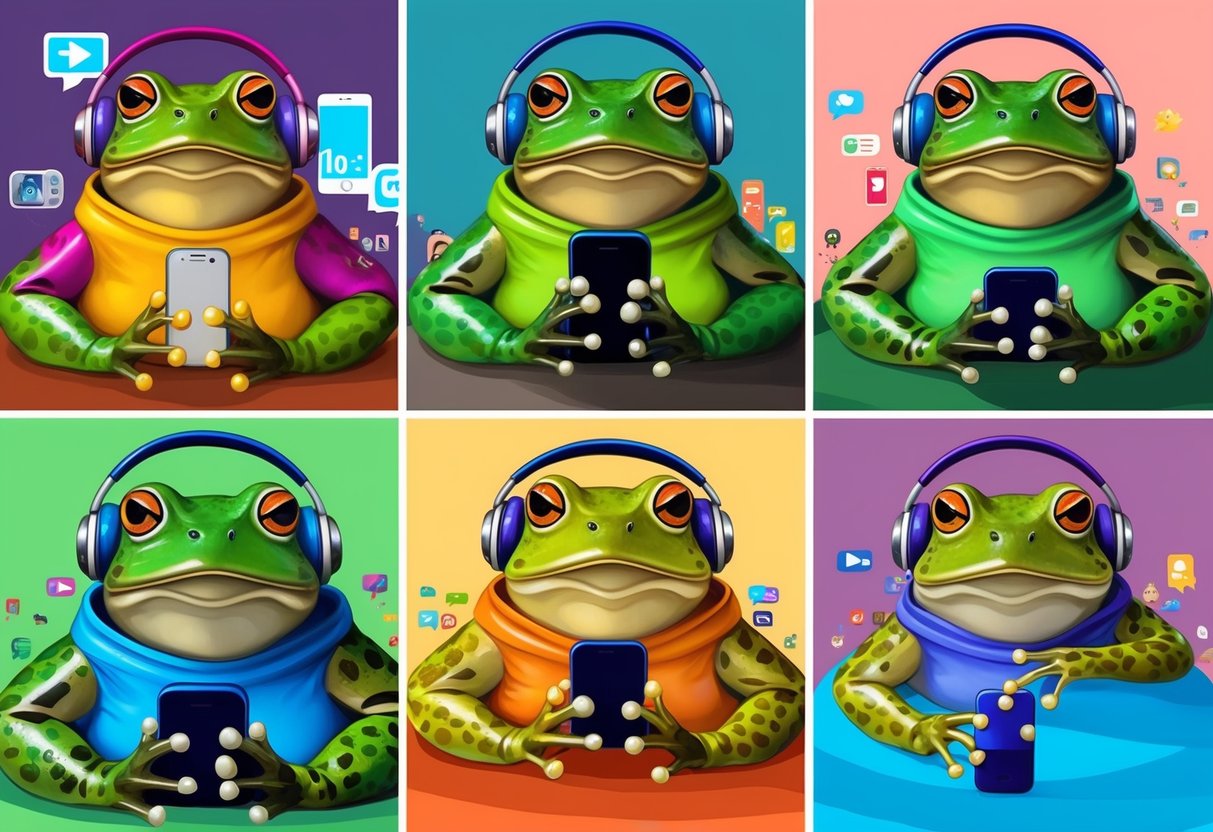
Their influence extends beyond the screen and page, inspiring fashion trends, merchandise, and even environmental awareness campaigns. The symbolism of frogs in different cultures adds depth to their presence in pop culture, representing qualities like transformation, good luck, and renewal.
Recent years have seen a resurgence in frog and toad popularity, particularly among younger generations. Frog and Toad books have found new life online, becoming part of Gen Z’s digital mood board and inspiring memes, artwork, and discussions about friendship and identity.
Key Takeaways
- Frogs and toads appear in diverse forms of media, from books to video games.
- These amphibians often symbolize transformation and good luck in popular culture.
- Frog and toad characters have experienced a recent surge in popularity among younger audiences.
Historical Presence of Frogs and Toads in Pop Culture

Frogs and toads have hopped their way through human culture for centuries. Their presence in myths, stories, and art spans diverse civilizations and time periods.
Mythic Origins and Folklore
Ancient cultures often saw frogs as magical creatures. In Egypt, the goddess Heqet had a frog’s head and symbolized fertility. Mesopotamian cultures shared this view.
Greek and Roman myths featured frogs too. One tale tells of peasants changed into frogs for being rude to a god. This story shows how frogs were seen as both humble and sacred.
Many cultures believed frogs could bring rain. Native American tribes saw them as rain spirits. In China, frogs were linked to good fortune and wealth.
Early Appearances in Literature
Frogs played key roles in classic tales. Aesop’s fables used frogs to teach moral lessons. One famous story is about a frog who wanted to be as big as an ox.
The Brothers Grimm wrote “The Frog Prince,” a beloved fairy tale. It tells of a frog turned into a prince by a kiss. This story remains popular today.
Mark Twain’s “The Celebrated Jumping Frog of Calaveras County” brought frogs into American literature. The tale uses a frog-jumping contest to poke fun at tall tales and local customs.
Frogs and Toads in 20th-Century Animation
Animated frogs hopped onto screens in the 1900s. Warner Bros. created Michigan J. Frog, a singing, dancing amphibian. He appeared in “One Froggy Evening” in 1955.
Disney’s “The Princess and the Frog” in 2009 gave a fresh spin to the classic fairy tale. It featured Tiana, Disney’s first Black princess, and a jazz-loving frog prince.
Kermit the Frog became a pop culture icon. Created by Jim Henson for “Sesame Street,” Kermit later starred in “The Muppet Show.” His green face and catchy tunes made him loved worldwide.
Frog and Toad Characters in Film and Television
Frogs and toads have hopped their way into the hearts of audiences through various movies and TV shows. These amphibian stars have taken on roles ranging from lovable sidekicks to main characters in their own right.
Iconic Movies Featuring Frogs and Toads
The Wind in the Willows introduced Mr. Toad, a bold and adventure-loving character. His antics have entertained readers and viewers for generations.
The Princess and the Frog brought us Prince Naveen, a charming frog prince who won over audiences with his transformation story. This Disney film put a fresh spin on the classic fairy tale.
Kermit the Frog, while primarily a TV star, has appeared in several movies. His big-screen adventures include The Muppet Movie and Muppets Most Wanted.
Television Shows with Amphibian Stars
Cartoon frogs have made a splash on TV screens. Michigan J. Frog, the singing amphibian from Warner Bros., became an instant hit with his catchy tunes and top hat.
Frog and Toad, based on Arnold Lobel’s beloved books, brought these two friends to life in an animated series. Their gentle adventures taught valuable lessons about friendship.
Teenage Mutant Ninja Turtles introduced Genghis Frog, a mutant frog who fought alongside the turtles. This character added an amphibian twist to the reptile-heavy cast.
Documentary Features on Frogs and Toads
Nature documentaries often spotlight frogs and toads due to their unique behaviors and habitats. The BBC’s Life in Cold Blood series dedicated an episode to these fascinating creatures.
Frogs: The Thin Green Line, a PBS documentary, explored the global decline of frog populations. It highlighted the environmental issues affecting these sensitive animals.
The Secret World of Frogs, a National Geographic feature, gave viewers an up-close look at rare and colorful frog species from around the world. This documentary showcased the diversity of these amazing amphibians.
Amphibians in Gaming and Interactive Media
![]()
Frogs and toads have hopped their way into the world of gaming and interactive media. These amphibians often take center stage as playable characters or educational tools.
Video Games with Frog Protagonists
Frogs have starred in many video games over the years. One classic example is Frogger, where players guide a frog across busy roads and rivers. The game’s simple premise made it a hit in arcades and home consoles.
Another popular frog character is Slippy Toad from the Star Fox series. As a skilled mechanic, Slippy helps the team with gadgets and repairs.
More recent games like Frog Detective put players in the webbed feet of amphibian sleuths. These quirky adventures blend humor with puzzle-solving.
Educational Games and Apps
Frogs and toads often appear in educational games and apps. These teach kids about amphibian life cycles, habitats, and conservation.
Many apps use frog and toad characteristics to explain scientific concepts. For example, games might show how frogs’ smooth skin helps them live in water and on land.
Some apps let users create virtual frog habitats. Players learn about ecosystems while caring for digital amphibians.
Citizen science apps encourage users to record real frog sightings. This helps researchers track frog populations and study environmental changes.
Literary Contributions
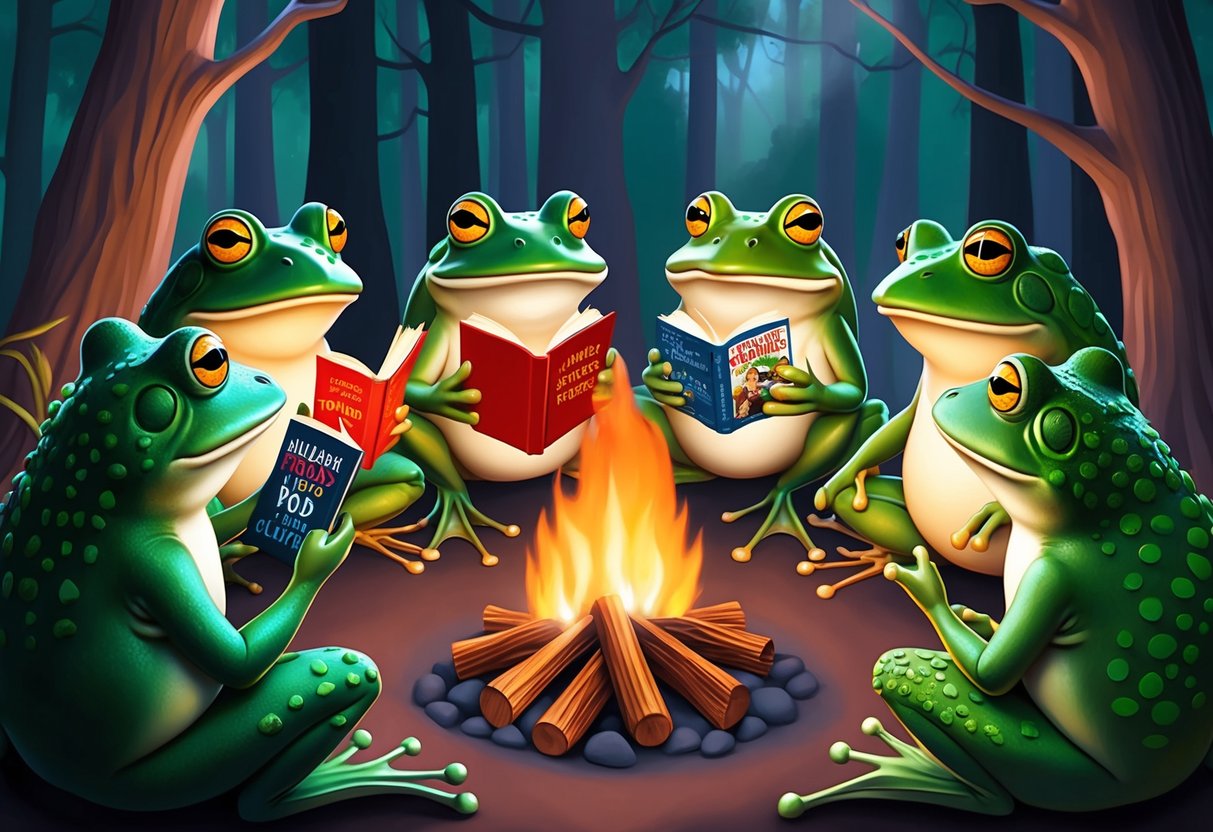
Frogs and toads have made a splash in literature, offering both entertainment and wisdom. Their roles range from lovable characters to symbols of transformation.
Children’s Books and Moral Lessons
Frog and Toad books have become pop culture icons since their debut over 50 years ago. These stories teach kids about friendship, courage, and honesty through simple yet profound tales.
Arnold Lobel’s characters resonate with readers of all ages. The books’ enduring appeal lies in their ability to address complex emotions in an accessible way.
Other children’s books featuring frogs include “The Frog Prince” and “Tuesday” by David Wiesner. These stories often use frogs to explore themes of change and unexpected beauty.
Graphic Novels and Comics
Frogs have hopped into the world of graphic novels and comics, adding a unique flavor to visual storytelling. “Frog and Toad Are Friends” has been adapted into graphic novel format, introducing these beloved characters to a new generation.
Comics like “Pepe the Frog” gained internet fame, though its meaning has shifted over time. This shows how frog characters can take on different cultural significances.
Some indie comics use frogs as quirky protagonists or sidekicks. These amphibian characters often bring humor and a touch of the absurd to their stories.
Frogs and Toads in Music and Performing Arts
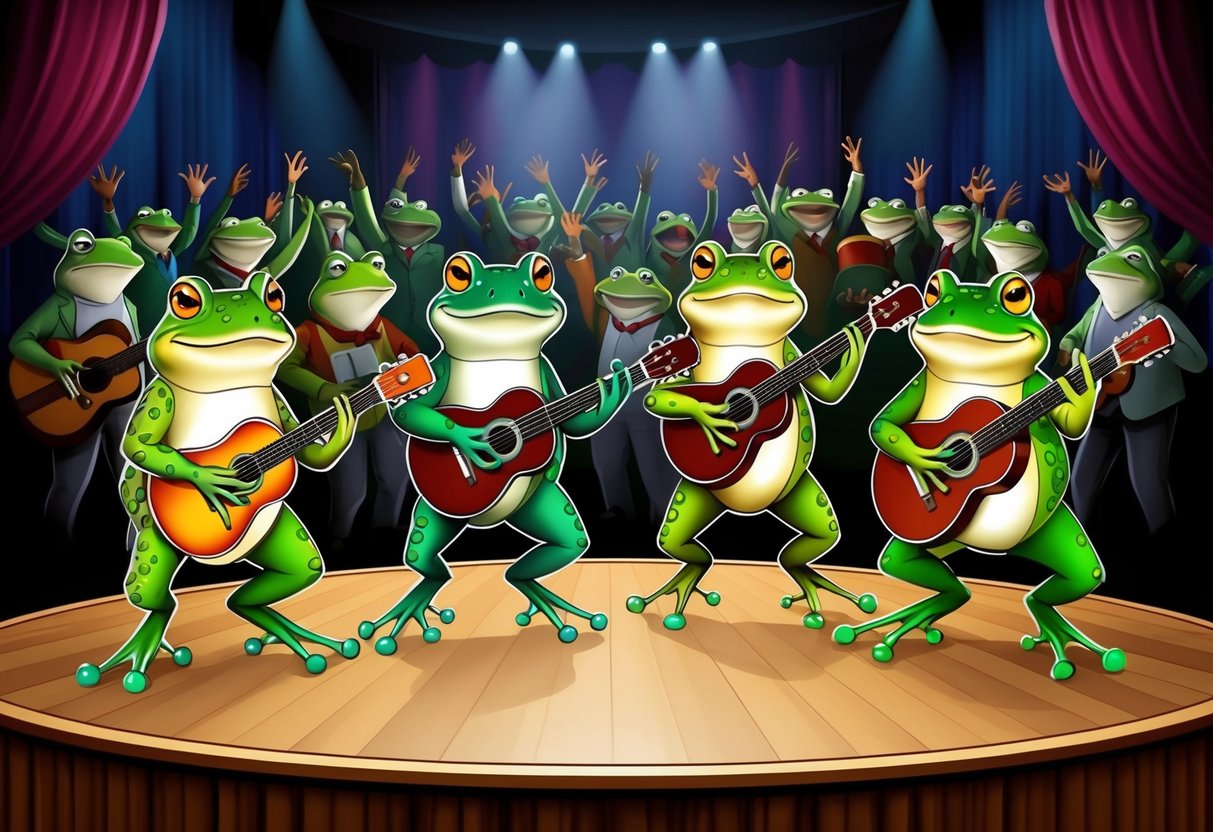
Frogs and toads have hopped their way into music and theater, charming audiences with their quirky personalities and distinctive sounds. These amphibians inspire catchy tunes and captivating stage productions.
Songs and Albums
Many musicians have used frogs and toads as inspiration for their work. The famous song “It’s Not Easy Being Green” was sung by Kermit the Frog, a beloved Muppet character. This tune became an anthem for self-acceptance and embracing one’s uniqueness.
Several bands have named themselves after these amphibians. The B-52s released a popular song called “Frog Prince” in 1980. Paul McCartney’s album “Chaos and Creation in the Backyard” features a track titled “English Tea” with frog sounds in the background.
Children’s music often includes frog-themed songs. “Five Little Speckled Frogs” is a classic nursery rhyme that helps kids learn counting. These amphibian-inspired tunes make learning fun and memorable for young listeners.
Stage Performances and Musicals
Frogs and toads have leapt onto the stage in various theatrical productions. One notable example is “A Year with Frog and Toad”, a musical based on the children’s books by Arnold Lobel. This charming show follows the friendship between Frog and Toad through four seasons.
The musical features catchy songs and colorful costumes that bring these amphibian characters to life. It explores themes of friendship, adventure, and personal growth. The show has delighted audiences of all ages since its debut on Broadway in 2003.
Other stage productions have used frog and toad characters to teach valuable lessons. Puppet shows often include these amphibians as wise or comical figures. Their presence in theater helps engage young audiences and spark imagination.
Symbolism and Iconography
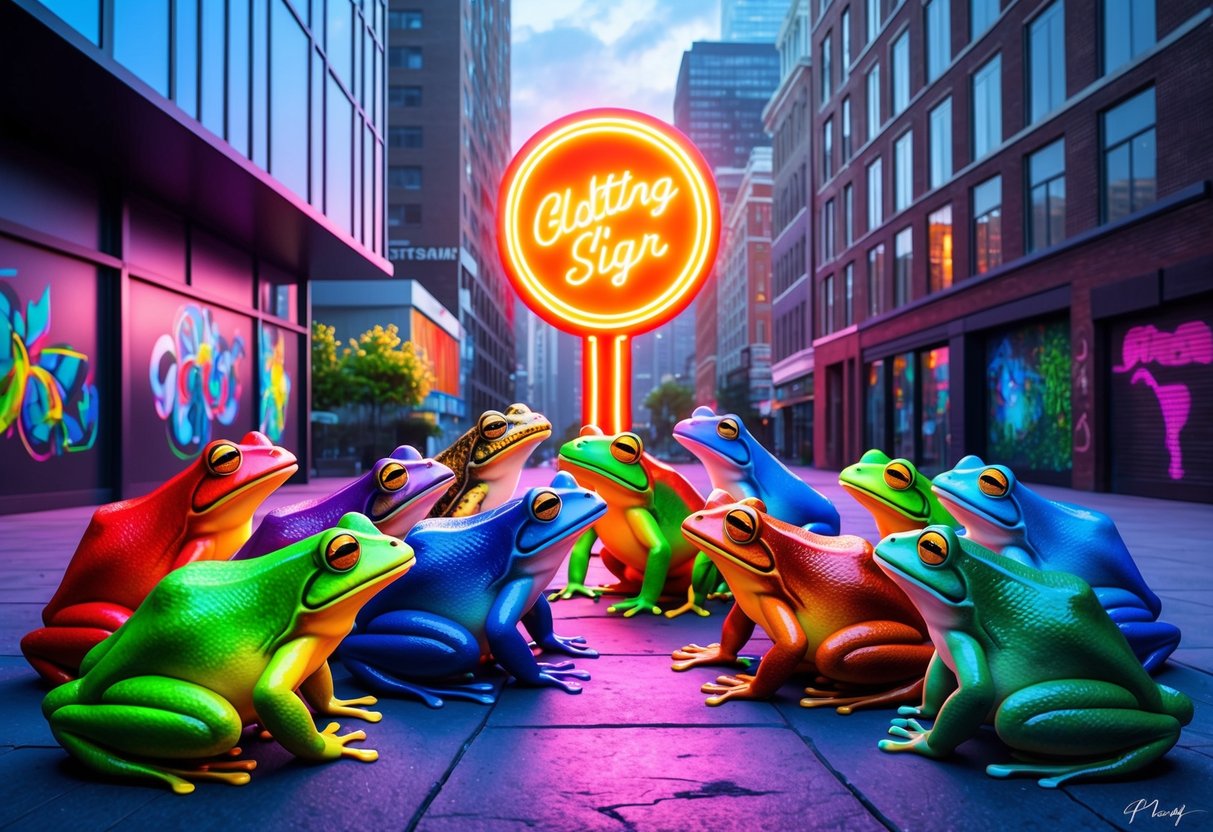
Frogs and toads have long been powerful symbols in cultures worldwide. Their image appears in many contexts, from ancient myths to modern marketing campaigns.
Frogs and Toads as Cultural Symbols
Frogs have played important roles in various cultures throughout history. In ancient Egypt and Mesopotamia, they represented fertility. Greek and Roman cultures linked frogs to fertility, harmony, and even wild behavior.
In some Native American traditions, frogs are seen as rain bringers and symbols of cleansing. Their connection to water gives them associations with emotions and the subconscious in many belief systems.
The famous fairy tale “The Frog Prince” shows how deeply frogs have become part of storytelling traditions. This tale presents the frog as a symbol of transformation and hidden potential.
Advertising and Brand Mascots
Companies have used frog and toad characters as memorable mascots for decades. One of the most famous is Kermit the Frog. He became a pop culture icon through his appearances on Sesame Street and The Muppet Show.
Budweiser’s “Bud-weis-er” frogs from the 1990s created a highly successful ad campaign. Their simple yet catchy croaking of the brand name stuck in viewers’ minds.
Freddo Frog, a chocolate bar mascot, has been popular in Australia and the UK since the 1930s. His smiling face has helped sell millions of treats over the years.
Frog and toad imagery continues to be used in logos and marketing materials for products ranging from eco-friendly cleaners to children’s clothing lines.
Conservation and Environmental Awareness
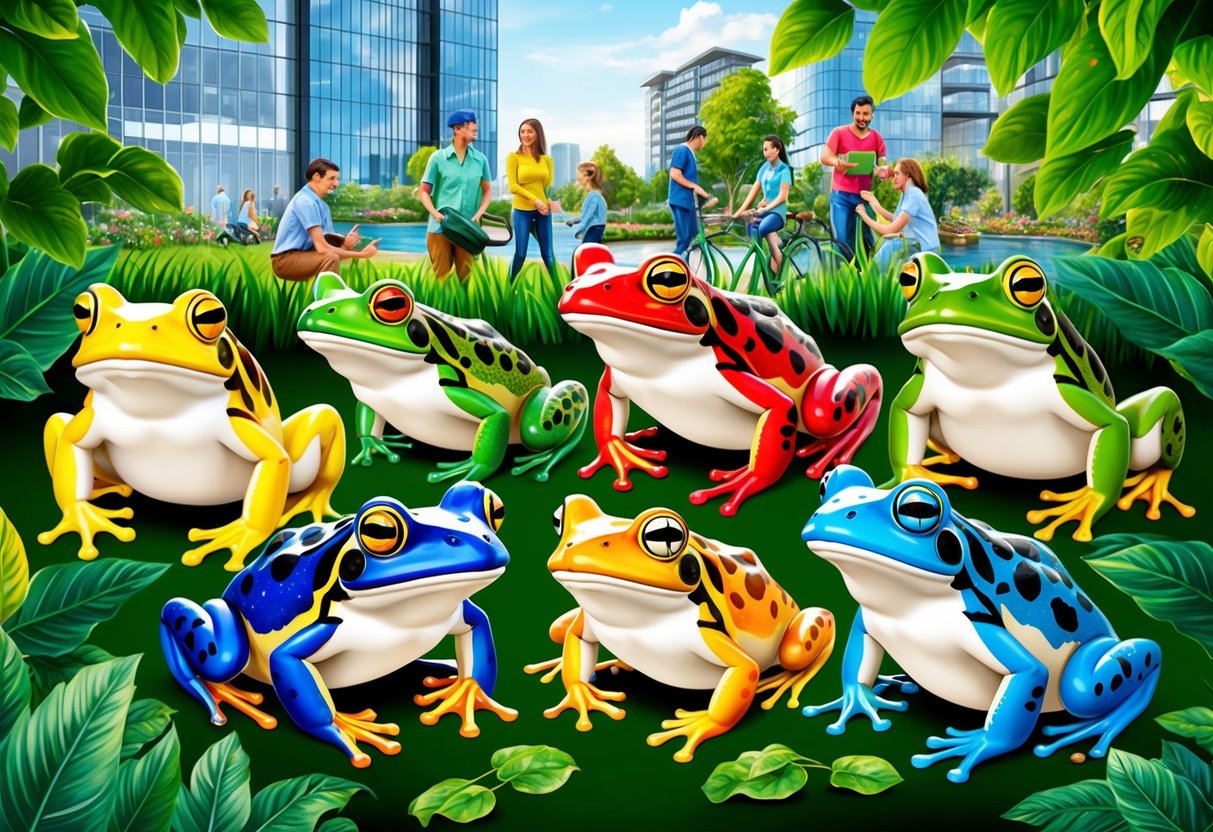
Frogs and toads have become symbols of environmental protection in pop culture. Their portrayal in media has sparked interest in amphibian conservation efforts and eco-friendly initiatives worldwide.
Pop Culture’s Role in Amphibian Conservation
Movies and TV shows have helped raise awareness about frog conservation. The 2008 Pixar film WALL-E highlighted environmental issues, including the impact on wildlife like frogs. This movie inspired many viewers to think about conservation.
Children’s books featuring frogs as main characters often include environmental messages. These stories teach kids about the importance of protecting habitats and ecosystems.
Video games sometimes use frog characters to educate players about conservation. Games may include missions to save frog populations or clean up polluted areas.
Eco-friendly Campaigns and Initiatives
Save The Frogs Day, celebrated on April 28th each year, is a global event for amphibian education and conservation. It involves thousands of volunteers worldwide who organize activities to protect frogs.
Many zoos and aquariums run breeding programs for endangered frog species. These programs help maintain populations of rare frogs and educate visitors about conservation.
Environmental groups use frog mascots in their campaigns. These cute characters help draw attention to issues like habitat loss and climate change.
Frogs Are Green is an organization that uses art and education to promote amphibian conservation. They organize art contests and provide educational materials to schools.
Merchandise and Product Lines
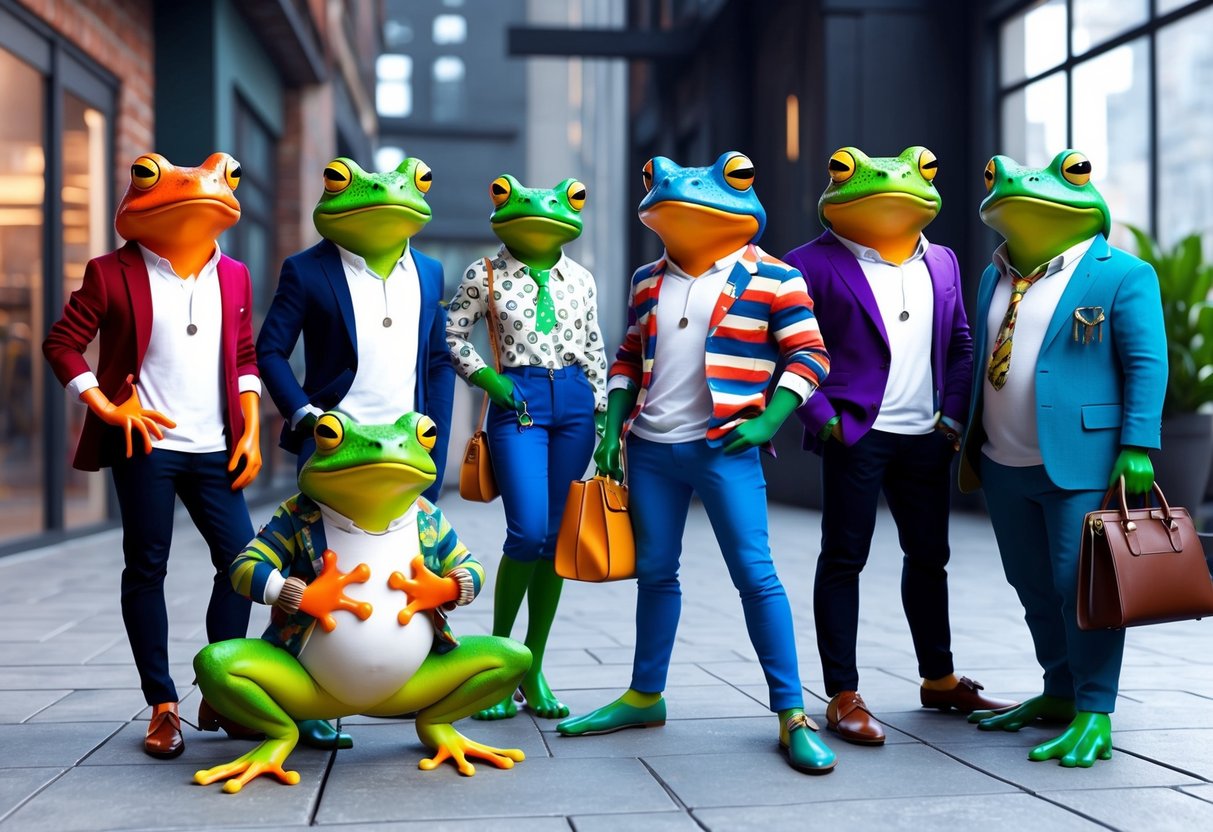
Frog and Toad characters have become popular in merchandise and product lines. Their images appear on many items, from clothing to home decor.
T-shirts, hoodies, and other apparel often feature the beloved amphibian duo. Fans can find Frog and Toad T-shirts with vintage-inspired designs on platforms like Etsy.
Home goods are another big category. Mugs, pillows, and wall art depicting Frog and Toad scenes are common. These items let people bring the characters’ charm into their daily lives.
Stationery products like notebooks, stickers, and bookmarks are popular too. They appeal to readers who want to carry a bit of Frog and Toad with them.
Plush toys and figurines allow fans to have their own 3D versions of the characters. These make great gifts for both children and nostalgic adults.
Some companies have created special product lines around Frog and Toad themes. These might include matching sets of items or limited edition releases.
The merchandising reflects the enduring appeal of these characters. It shows how they’ve moved beyond books to become cultural icons.
Frogs and Toads in Internet Memes and Digital Culture
Frogs and toads have hopped into the spotlight of internet culture. These amphibians feature in countless memes, capturing the hearts of online communities.
One famous example is Pepe the Frog. This cartoon character became a viral phenomenon and took on complex meanings in digital spaces. Pepe’s journey shows how memes can evolve and change over time.
Another beloved pair is Frog and Toad from the children’s books. These characters have found new life as memes, resonating with both nostalgic adults and younger internet users.
Frogs have entered what some call an “internet golden age.” Their presence in memes has shifted from one-off characters to a wave of frog-related content across platforms.
The appeal of frogs in digital culture lies in their versatility. They can represent various emotions and situations, making them perfect for meme creation.
Frog memes often use simple, bold imagery. This style makes them easy to share and adapt, contributing to their spread across social media platforms.
As internet culture evolves, frogs and toads continue to play a significant role. Their presence in memes reflects broader trends in online communication and humor.
Influence on Fashion and Design

Frogs and toads have hopped their way into fashion and design trends. These amphibians show up on clothing, accessories, and home decor items.
T-shirts, socks, and hats often feature frog and toad designs. Jewelry makers create earrings, necklaces, and brooches shaped like these creatures.
In home decor, frog figurines and toad-themed throw pillows are popular. Wallpaper and fabric patterns also showcase these animals in stylized forms.
The Frog and Toad book characters have gained a new following among young adults. Their images now appear on merchandise aimed at this demographic.
Frog and toad motifs fit well with the cottagecore aesthetic. This style celebrates a simple, nature-inspired life.
Designers use frog and toad imagery to add whimsy to their creations. Green color palettes inspired by these amphibians are common in fashion and interior design.
Pop art’s influence extends to frog and toad depictions. Bold, graphic representations of these animals appear in prints and digital designs.
Social media has boosted the popularity of frog and toad-themed products. Memes and viral content featuring these creatures drive demand for related merchandise.
Frequently Asked Questions
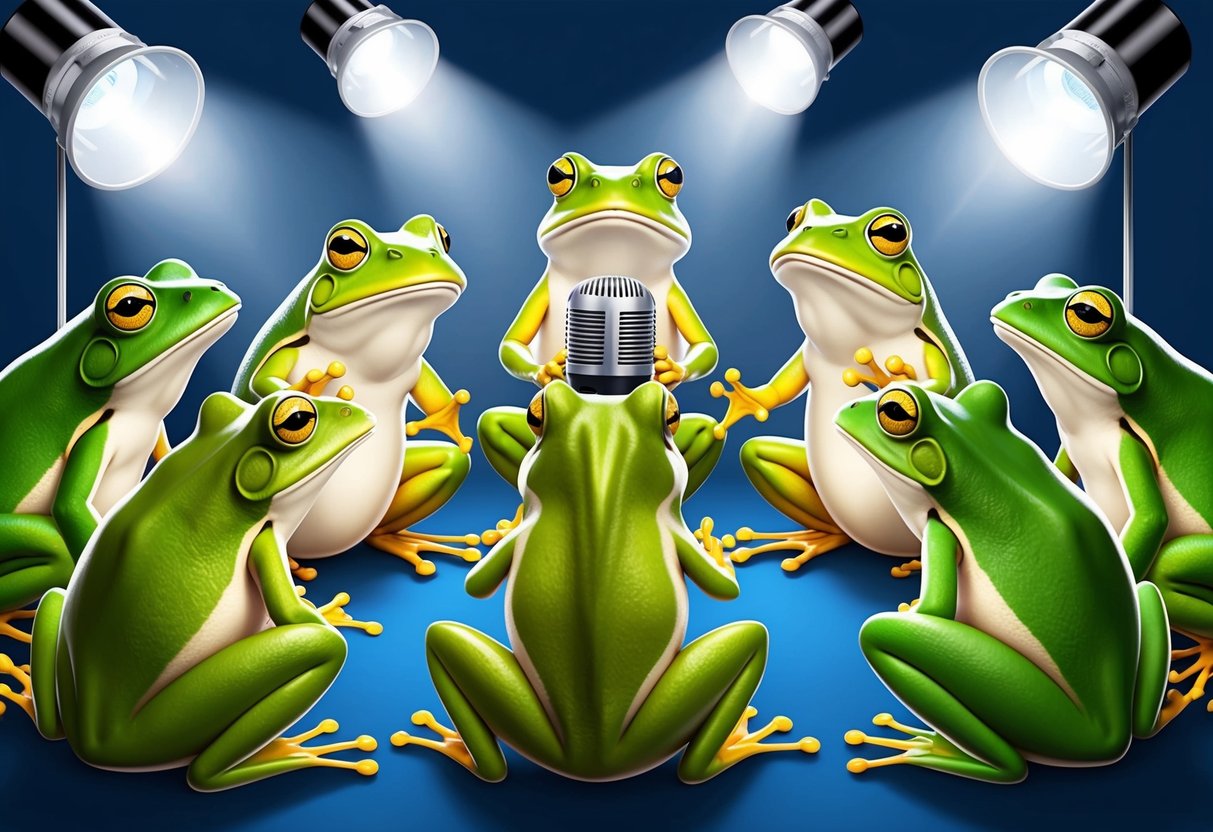
Frogs and toads have hopped their way into many aspects of modern pop culture. They appear in movies, TV shows, books, and even spiritual practices around the world.
Who are some iconic frog characters in film and television?
Kermit the Frog is one of the most famous amphibian characters. He first appeared on Sesame Street in 1955 and later became the star of The Muppet Show.
Michigan J. Frog, the singing and dancing frog from Warner Bros. cartoons, is another well-known character. He debuted in the 1955 Merrie Melodies cartoon “One Froggy Evening.”
What role do frogs and toads play in various cultural mythologies?
In many Native American myths, frogs are linked to rain and water. Some tribes see them as rain-bringers or guardians of sacred springs.
In ancient Egyptian mythology, the goddess Heqet had the head of a frog. She was associated with fertility and childbirth.
How have frogs and toads been represented in literary works?
One of the most beloved frog duos in literature is Frog and Toad from Arnold Lobel’s series. These books have gained popularity even among adults for their themes of friendship and self-acceptance.
In fairy tales, frogs often appear as enchanted princes. “The Frog Prince” by the Brothers Grimm is a classic example of this trope.
In what ways are frogs and toads used symbolically in different spiritual contexts?
In some Native American traditions, frogs are seen as spirit animals representing cleansing and renewal. Their connection to water makes them symbols of emotional healing.
In feng shui, the three-legged money frog is believed to attract wealth and prosperity. It’s often placed near the front door of homes or businesses.
What significance do frogs hold in Chinese cultural symbols and stories?
In Chinese culture, frogs are associated with good luck and prosperity. The character for frog sounds similar to the word for “to return,” making frogs symbols of safe journeys.
The mythical three-legged golden toad is believed to bring wealth. It’s often depicted with a coin in its mouth.
How have perceptions of frogs and toads in pop culture evolved over time?
Early depictions of frogs in pop culture often portrayed them as slimy or unappealing. This changed with characters like Kermit the Frog, who became beloved icons.
In recent years, frogs have gained popularity as internet memes. Images of frogs are used to express various emotions and situations online.
